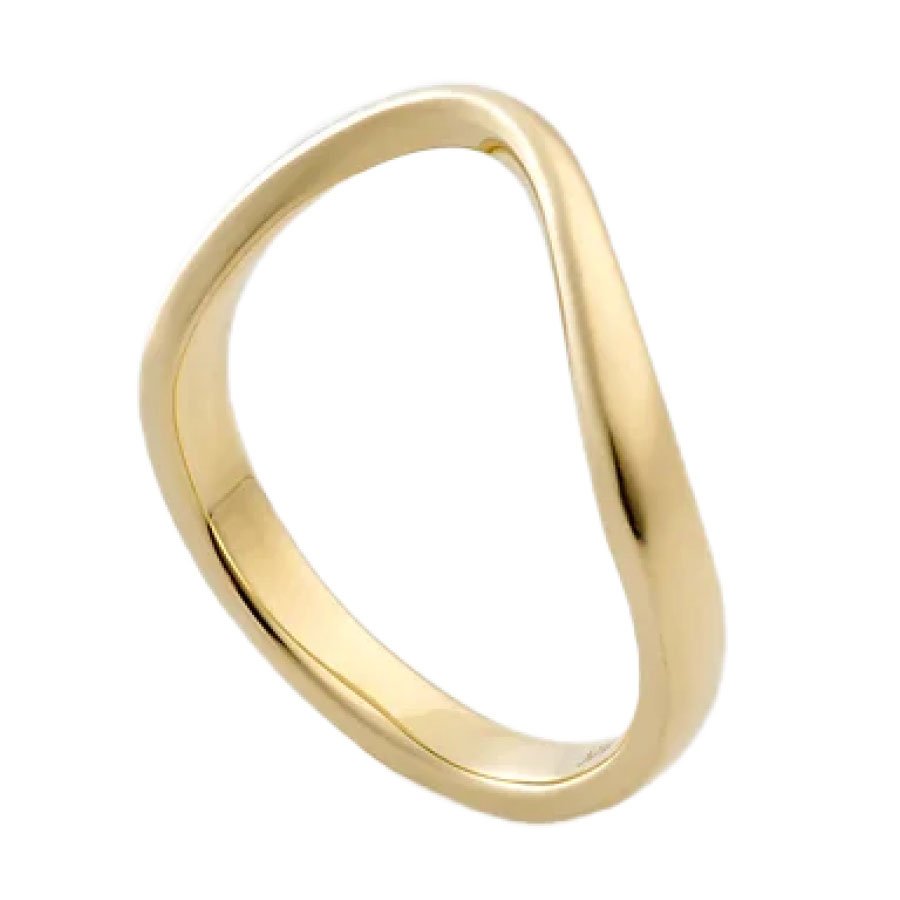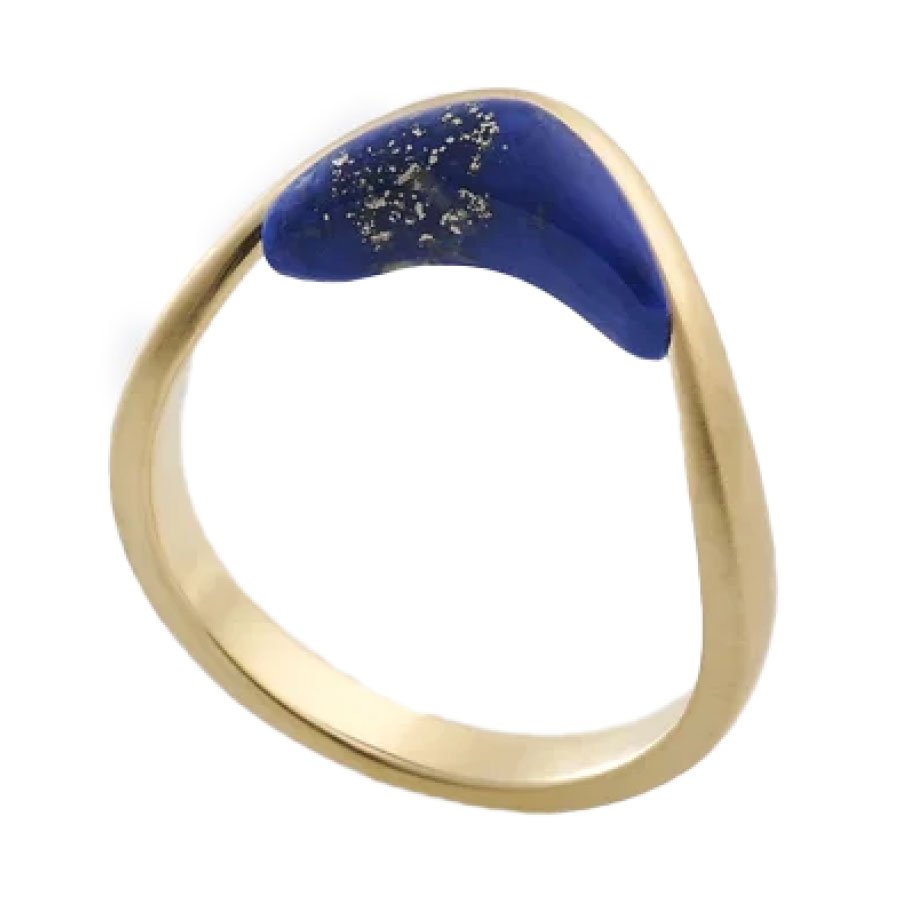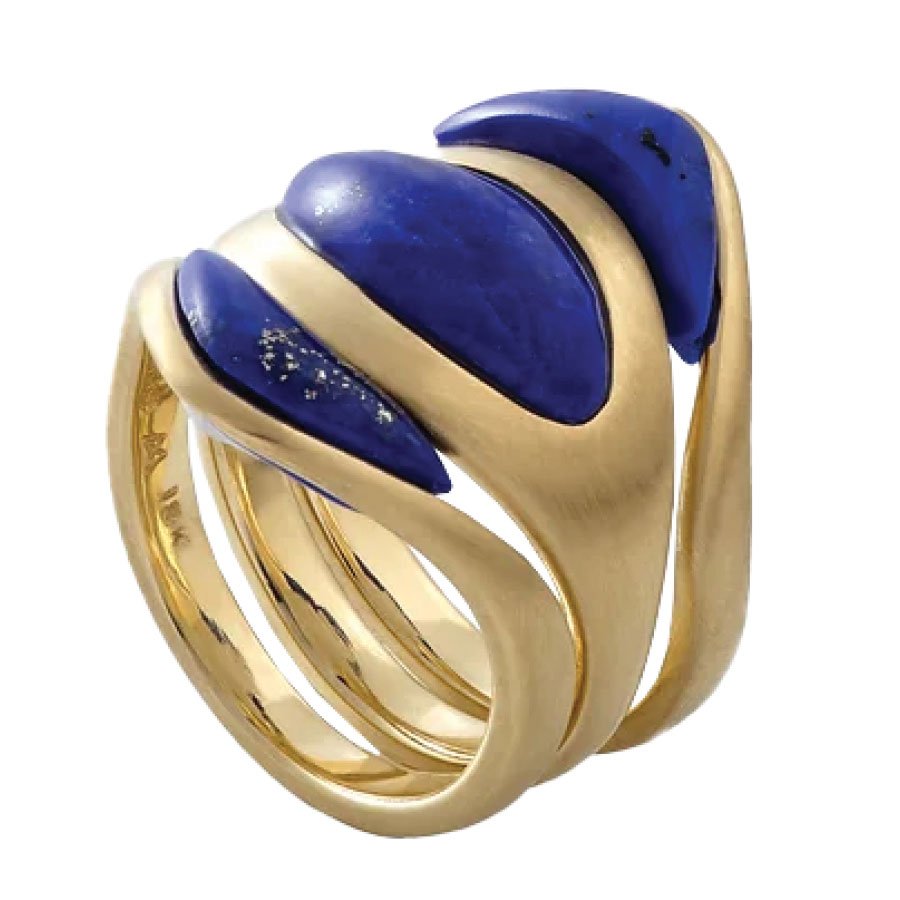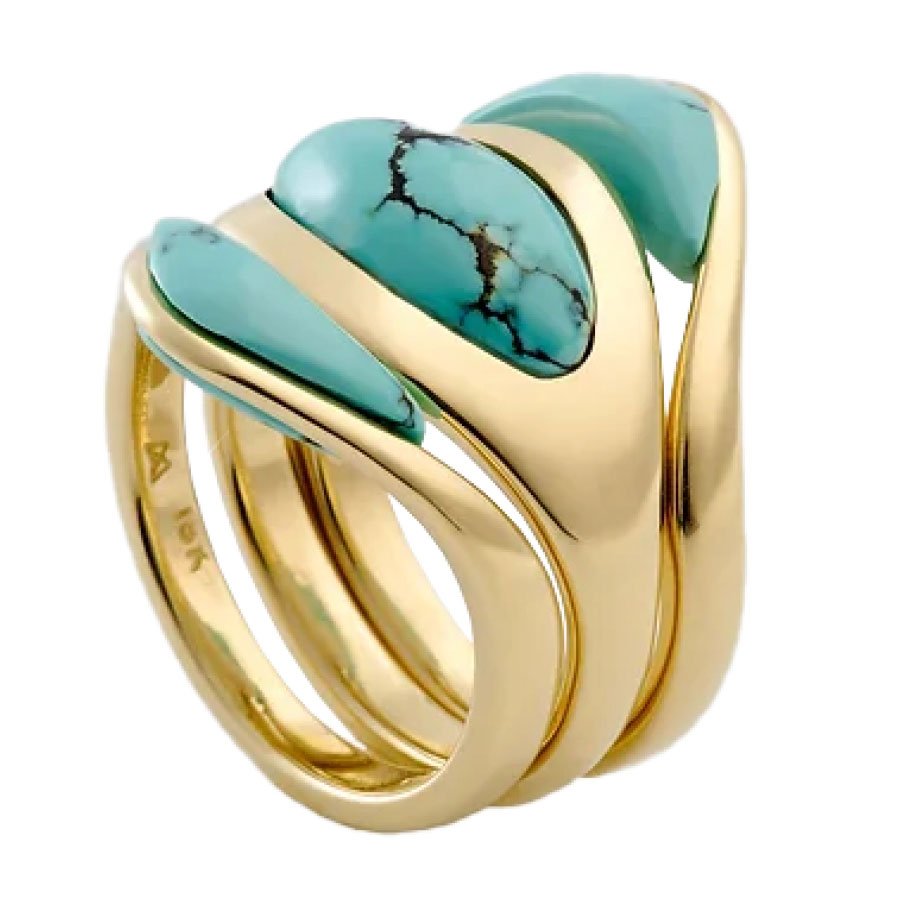What is Fairmined Gold?
As we make ethical choices with Fairtrade wine, food, and fashion… why not the gold in our jewelry?
Advocating for responsibly sourced gemstones (knowing who and where they come from) is part of All The Brilliants’ DNA.
However, I have not done the same for Fairmined precious metals.
This is the first step in changing that.
What is ethical about Fairmined gold?
Fairmined is an assurance label that certifies gold from empowered responsible artisanal and small-scale mining organizations. It transforms mining into an active force for good, ensuring social development and environmental protection - providing everyone with a source of gold to be proud of.
The jewelry you invest in can reflect your story, style, and values.
SHOP CURATED FAIRMINED GOLD JEWELRY
LET’S COMPARE RECYCLED VERSUS FAIRMINED GOLD
First, a quick history with a little data…
Our Ancient Ancestors and Gold
The earliest archeological evidence of gold artifacts was discovered in the Varna Necropolis in Bulgaria. Read all about the “Varna Gold” via the Smithsonian Magazine.
Image Credit: Varna Regional Museum of History
While we don’t know when our ancient ancestors began to mine gold, the radiocarbon dating of this site is around 4,500BC, suggesting that mining would have been practiced at least before this time.
Today the vast majority of gold is mined from China, Russia, and Australia. Given the atrocities Russia is inflicting on the Ukrainian people, it is critical to ensure the gold and diamonds in your jewelry are not funding Russia in this conflict.
Global Gold Mine Production
Where does Fairmined gold come from?
Certified Fairmining organizations are currently operating in:
Colombia - Chede, Iquira, La Gabriela
Peru - Cecomip, Cruz Pata, Oro Puno, Macdesa
Equador - Ponce Enríquez
FAIRMINED GOLD vs RECYCLED GOLD
Now, let’s compare the two by way of an original blog post “Ethical Gold: Fairmined vs. Recycled Gold A Fair Comparison” written by Morgane Nzelemona, Account Management Specialist at the Alliance for Responsible Mining. With Morgane’s permission, her comparison is below with a few amendments:
When it comes to choosing ethical gold, there are various options worth considering. In the past few years, different alternatives have been promoted as responsible or sustainable jewelry. Below we examine the pros and cons of recycled and Fairmined gold to help you decide the best fit for you.
PROS RECYCLED GOLD
THE PROMISE OF A LOWER CARBON FOOTPRINT
According to a study by the World Gold Council, more than 99% of the gold carbon footprint is associated with activities outside of the direct control of brands, and that is related to the mining sector. Therefore, if your goal is to reduce your carbon footprint, choosing jewelry with recycled gold might be the best option.
THE CIRCULAR ECONOMY
Recycled gold benefits from the instantaneous positive aura of the “recycling” concept - one that many of us practice in other aspects of our lives.
A WIDELY AVAILABLE OPTION
Recycled gold represents 33% of the annual gold supply, according to the World Gold Council. Although recycled gold can’t cover the global jewelry demand, it is easy to access and available worldwide.
AN INEXPENSIVE OPTION
Last but not least, recycled gold is an attractive option as there is little to no price difference between recycled and conventional gold.
PROS FAIRMINED GOLD
TRANSFORMING THE MINING SECTOR
By choosing Fairmined gold, you incentivize and reward responsible mining practices and contribute to the positive transformation of the artisanal and small-scale mining (ASM) sector. Thanks to the fair price and the additional premium you pay, you provide the certified organizations with crucial resources to invest in improving their productivity, mining site, working conditions, environmental management, and promoting community development. However, this change won’t happen on its own. Your purchases contribute to achieving long-term positive transformation in remote mining communities.
ASSURANCE FOR YOU
Fairmined certified mining organizations comply with the strictest legal, organizational, labor, technical, social, and environmental requirements. This means that they are formal and legal organizations that treat their workers well and have all the necessary safety measures and protocols in place. These organizations also adopt better environmental practices to reduce their impact and protect their people by reducing their use of chemicals and protecting water supplies. These organizations are free from child labor and promote gender equality. Finally, Fairmined certified mines are recognized, internationally and in their home countries, as model mines, such as the mine of Iquira.
FAIRMINED GOLD IS TRACEABLE
With Fairmined, your gold can be traced back to its origin: the certified mining organizations. You thus have clarity about where your it comes from and under which conditions it was mined.
A LABEL BACKED BY AN INDEPENDENT AND RIGOROUS THIRD-PARTY CERTIFICATION SYSTEM
Independent auditors visit the mines every year to check their compliance with the Fairmined Standard and continuous improvement. In addition, the team of the Alliance for Responsible Mining also visits the mines regularly to promote and monitor the implementation of continuous improvement processes.
THE EMOTIONAL VALUE OF YOUR JEWELRY
By knowing where your gold comes from, you can establish a direct human and emotional connection to the miners who extracted your gold and be directly linked to the story of the mining communities. Your choice is important because you are giving back to others with every purchase.
CONS RECYCLED GOLD
RECYCLED GOLD MIGHT NOT BE WHAT YOU THINK
In general, recycled gold can be understood as gold that has been previously refined. Main industry standards consider that gold recovered from consumer products, as well as a byproduct of manufacturing, can be refined again and labeled as recycled. Therefore, it is possible for “recycled gold” to be made with material that has had a very short journey from the mine to becoming recycled stock. So it doesn’t mean that recycled gold is old, but it can be newly mined material that has been transformed into recycled gold very quickly.
NO IMPACT ON MINING
You might think that choosing recycled will help curb the demand for newly mined gold. However, mining won’t stop because the demand for recycled gold rises. Over the last decade, despite the increased use of recycled gold, the production of newly mined gold has also increased. Why? Because it is not mined for any specific sector, but to generate money. Only the price of gold (which depends more on global security than on jewelry demand) and mining reserves impact mining intensity.
As mining won’t stop, it is crucial to promote positive change and decrease negative impacts. Gold mining can be associated with irresponsible practices such as human rights abuses, environmental destruction, conflict financing, child labor, etc. If you decide not to support the transformation of the sector, you might end up using dirty gold anyways. Therefore you might want to make sure that it was mined under responsible conditions.
Finally, given the millions of people who depend on artisanal and small-scale mining, if you choose only recycled gold, you will disengage from their urgent needs and miss the opportunity to make a positive impact in their lives and communities.
NO GUARANTEE ABOUT ORIGIN
With recycled gold, you have no guarantee about its origin.
The recycled gold providers argue that the origins are backed by serious verification processes. However, as the NGO Global Witness highlighted in a recent report, it is reasonable to fear that materials extracted illegally or linked to human rights abuses, conflict, corruption, or environmental damages have found their way into global supply chains, and could be “cleaned up” through the recycled gold loophole, that only looks back as far as the point in which it was returned for second refining. Several investigations have demonstrated the use of recycled gold supply chains as a way to clean dirty gold.
CONS FAIRMINED GOLD
THE PRICE
Traceability, responsible mining, fairer trade conditions, and support to the communities come at an additional price: Fairmined gold is more expensive than conventional and recycled gold. On average, it costs between 10 – 20% more than conventional gold.
LIMITED AVAILABILITY AND ACCESS
Due to the small number of certified mines and their limited production compared to large-scale mines, the Fairmined gold represents less than 1% of the global gold production.
Furthermore, Fairmined gold can only be sourced from a limited number of suppliers worldwide. In addition, the selection of mill products and findings available in Fairmined gold is still quite restricted compared to the offer of conventional and recycled gold.
CONCLUSION
Recycled gold and Fairmined gold are two ethical gold options to consider - each with pros and cons to balance and align with your values.
As your jewelry guide, I help you acquire Fairmined jewelry, thoughtfully designed by women like Cate of Thesis Gems.
THE BRILLIANT CONCIERGE: YOUR FINE JEWELRY GUIDE
I find discerning jewelry for you or a gift for someone you love. Beyond gemstone sourcing, this includes private shopping for:
rings
earrings
necklaces
bracelets
responsibly sourced gemstones
Learn more about this white-glove service.
All The Brilliants’ fine jewelry concierge is New York City based. From the Upper East Side to Park Slope, I can come to you - or we can meet virtually!

































